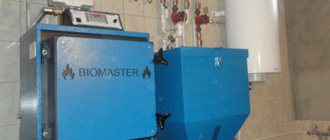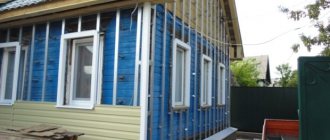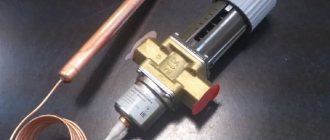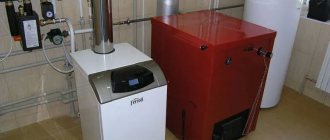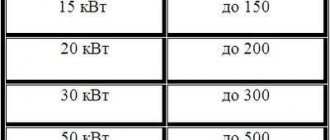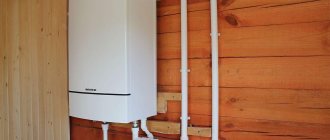The most common reason for choosing a solid fuel boiler is the absence of a gas main near the house, less often - the low cost or availability of solid fuel, for example, in coal-mining regions. Also, solid fuel boilers are still in demand due to their low cost, reliability and energy independence.
Modern solid fuel models have come quite far from their old-style counterparts; it is quite possible to use them as the basis of a heating system in a permanent home. In addition to standard non-volatile configurations, there are automated, much more efficient models that require connection to an electrical network; as well as boilers with a burning duration of several days and combined designs designed for the installation of a gas burner or heating elements.
In this material, we tried to reveal in as much detail as possible all the criteria and subtleties of choosing a solid fuel boiler, and gave examples of the most successful, efficient and best in terms of price-quality ratio for 2020, household solid fuel hot water boilers.
No. 1. About operating principles
It would seem that what’s so complicated about a solid fuel boiler? I threw wood or coal into the firebox, they burned, heated the water, and the house was filled with warmth. In general, everything is true, but the principle of operation of the device is somewhat more complicated. The following basic elements can be distinguished in the design of a modern solid fuel boiler:
- firebox;
- coolant circulation system;
- smoke removal system;
- safety system;
- heat storage system.
Fuel is supplied to the furnace and burned to produce heat. This is the classic version. There are pyrolysis boilers in which solid fuel (wood) smolders, releasing gas, which then burns, providing heat. In this case, the efficiency increases somewhat, but we will deal with the operating features of classical and pyrolysis boilers later.
The firebox is a large container with double walls , between which there is a coolant . In most cases this is water, less often an antifreeze liquid or a mixture of water and antifreeze is used. The coolant receives heat from burned fuel, circulates through pipes and radiators, heating the air in the house. Cooling down, the water returns to the boiler and everything repeats. Often, special pumps are used to improve circulation.
When burning fuel, not only heat is generated, but also gases that must be removed. A smoke removal system is designed for this purpose . The chimney removes gases from the boiler to the street; sometimes a forced ventilation system .
The biggest danger that can happen when operating a solid fuel boiler is overheating of the coolant . The water may already be sufficiently heated, and the boiler will continue to produce heat. If the water boils, the heating system may not be able to handle it, especially if the house has metal-plastic pipes that are quite sensitive to high temperatures. It is almost impossible to stop the combustion of wood or coal - all that remains is to reduce the intensity, and to prevent overheated coolant from entering the system, use a cooling heat exchanger . It receives cold water from the water supply, but in case of a water outage it is better to always have a sufficient supply.
The cooling heat exchanger can be built into the boiler or located between the boiler and the rest of the heating system. It can only be built into the structure of a steel boiler. It works in one of two possible ways:
- The first option is cooling the heated coolant , which passes through a cooling heat exchanger. Cold water is supplied to the cooling heat exchanger through a thermal valve, which opens when the coolant temperature reaches +950C. The process continues until the coolant cools to a safe temperature;
- the second option provides presence of shut-off valve.
If the water temperature rises to critical values, the valve does not allow it to enter the pipes. Cold water is supplied to the heating system from the water supply system, and the overheated coolant is drained into the sewer. True, the water pressure should be sufficient, and its composition should not contain an increased amount of salts, which will provoke the formation of scale.
Draining heated water into the sewer is not very smart and economical, so it is better to supplement the design of a solid fuel boiler with a storage tank . This is a buffer between the boiler and the rest of the heating system, thanks to which a number of important functions :
- accumulation of warm water for its further use, and this means fuel economy, comfort, stability in maintaining temperature and reducing the number of trips to the firebox to add fuel;
- accident protection . In the tank, superheated water is mixed with warm water;
- possibility to use different types of boilers . The storage tank will be common to a solid fuel boiler and, for example, a gas or electric boiler; it will allow you to simply organize a unified heating system for your home and secure yourself with several heat sources.
Thermal accumulators are made of cast iron or steel and receive powerful thermal insulation . The volume of the buffer , first of all, depends on the power of the boiler : for every 1 kW it is necessary to provide 25 liters of tank volume . The quality of this element of the heating system must be of the highest quality, so it is better to trust products from well-known manufacturers. The online store https://www.duim24.ru/ presents heat accumulators only from trusted companies; the range includes tanks of different volumes and materials of manufacture.
Wood boiler installation
Fundamentally, the installation of the device does not differ from a similar operation with gas equipment. However, some nuances should be taken into account. The energy carrier for the gas boiler comes through a pipe from the main line and does not require any effort from the user. During combustion, combustion products are not collected. Firewood requires a separate storage place with recommended conditions. It is advisable that they be in a dry place. High humidity reduces work efficiency, since part of the energy is spent on drying the wood. Adding fuel to the boiler and removing ash is done strictly following fire safety precautions.
Particular attention is paid to the ventilation system and chimney design. When burning, a large amount of substances harmful to health is released. Their entry into residential premises is unacceptable. Modern boilers from leading manufacturers are equipped with reliable protection systems and sensors. However, wood-burning devices are not recommended to be installed in rooms combined with living space. A steel sheet is laid under the boiler within a radius of at least 1 meter. There are no conflicts when communicating with a standard heating system.
Model of a heating system based on a wood boiler Source maltavista.ru
No. 2. Varieties
With a similar general design, different types of solid fuel boilers have some design nuances. The entire existing range can be divided into the following types:
- classic or traditional boilers;
- pyrolysis , or gas-generating boilers;
- long burning boilers ;
- pellet boilers.
Classic solid fuel
Such boilers are very similar to conventional stoves . The heat here is obtained as a result of the flaming combustion of fuel . As a rule, wood or coal . Fuel is supplied through one door, and through the other, the boiler is cleaned of ash and other products of incomplete combustion. Traditional boilers can have either a cast iron or a steel heat exchanger and are usually used in systems with natural circulation.
Although the efficiency of this type of device is not the highest, they are valued for their reliability , because the boiler design contains a minimum of electronic elements that can fail. The only element of automation is a temperature controller , but it also works on a mechanical principle. Classic boilers are durable and rarely require repairs.
Pyrolysis
Pyrolysis (gas generator) boilers are somewhat more complex. Their design has two combustion chambers . Solid fuel (wood) is placed in the first; at high temperatures and oxygen deficiency, the process of pyrolysis with the release of pyrolysis gas. It goes into the second chamber, where it burns and gives off heat to the coolant. All that remains from the firewood is charcoal.
The combustion temperature of pyrolysis gas is higher than that of firewood, which ensures an increase in boiler efficiency of up to 90%. If we take into account the fact that the smoldering process of wood is slower than its combustion, then we can talk about another advantage - one load of fuel will last for 10-13 hours (for classic boilers this figure is 5-7 hours). Hardwood with low humidity (no more than 20%) is used as fuel.
Long burning
This type of boiler is in many ways similar to pyrolysis boilers, but differs in some technical features. Solid fuel smolders in the first chamber , forms gases that burn out in the second firebox . , only the upper part of the fuel is involved in the process of smoldering and combustion . Due to this, it has to be loaded less often, and efficiency increases. One load of firewood is enough to keep the boiler running for two days . The main disadvantage is the high cost of the equipment.
Pellet
They are often also called automatic boilers . According to the principle of operation, they are not much different from traditional ones, but in addition to the firebox, they have a bunker for storing fuel reserves. This means that it will be unnecessary to frequently go up and pour fuel into the firebox manually - everything will be done automatically. 7 days can pass between loading the fuel supply . In addition, such a system can be very precisely adjusted to suit you. The fuel is considered one of the most environmentally friendly at the moment. Pellets are granules that are produced from wood waste (sawdust, shavings, etc.). The efficiency of such systems is 91-95% , the only negative is the high price of the boilers .
Coolant temperature
This is of great importance, it must exceed the “dew point”. Otherwise, acid will begin to form from steam and oxidation products, which will lead to the destruction of the unit.
- If you forcibly turn off the circulation, this will lead to a temperature difference in the boiler unit and heating radiators.
- As a result, the likelihood of water hammer and deformation increases. Now about inertia. It should be remembered that in such devices maintaining a suitable heat index is problematic. This problem can be solved in several ways.
One of them is the presence of a cooler. Both external and built into the case.
Another solution is a storage tank. It increases efficiency and allows you to control heat transfer.
No. 3. Heat exchanger material
There are few options here. Heat exchangers can be:
- steel;
- cast iron.
It is difficult to say unequivocally which solid fuel boiler is better to choose - it all depends on the budget, operating conditions and personal requirements. Manufacturers produce both boilers.
Cast iron heat exchangers have the following advantages:
- they are assembled from separate sections , so their transportation and installation are easier. Moreover, if one of the sections is damaged, it can be replaced , so the durability of such boilers is excellent - up to 20 years or more;
- During operation, cast iron becomes covered with a film of iron oxide. This is dry rust, which hardly progresses, protecting the rest of the material from negative effects. Cast iron is more resistant to corrosion , so you will have to clean the heat exchanger less often;
- Cast iron retains heat longer , which is a plus. The downside is that it warms up more slowly.
Among the disadvantages are heavy weight, higher fragility than steel, and poor resistance to thermal shock. With a sharp change in temperature, a cast iron heat exchanger can easily crack, so avoid getting cold water into the heat exchanger that has not yet cooled down.
The advantages of a steel heat exchanger include:
- higher strength , and since such a heat exchanger is welded in a factory and comes out in one piece, it becomes possible to manufacture combustion chambers of complex configurations , thereby increasing efficiency;
- high resistance to sudden temperature changes . Boilers with such heat exchangers, as a rule, receive more advanced automation, since the temperature can be controlled freely without fear of damaging the structure;
- not as high weight as cast iron;
- faster heating, but also faster cooling.
On the other hand, steel is more susceptible to the development of corrosion processes . Despite the resistance to temperature changes, frequent such fluctuations may cause cracks to appear at welding points. If something happens, it will be impossible to repair a steel boiler - you will have to buy a new one, therefore the durability of such structures is lower.
No. 4. Traction and energy consumption
Solid fuel boilers can be divided into two types:
- non-volatile with natural draft . They do without special pumps, so they do not consume electricity. Classic boilers and some long-burning boilers operate in a similar design. Well suited for areas where there are frequent power outages, can be used as a backup heat source;
- volatile with additional traction . The design includes a fan that helps air flow into the combustion chamber. Most long-term combustion boilers, pellet and pyrolysis boilers are produced in this design. Thanks to the control panel, you can make some settings.
Prices: summary table
| Model | power, kWt | Efficiency, % | Peculiarities | price, rub. | Rating (our rating from 0 to 5 points) |
| Teplodar Cooper Praktik 14 | 14 | 80 | Non-volatile, with heating elements, steel | 14 600 | 4.5 |
| ZOTA Yenisei 18 | 18 | 70 | Non-volatile, with the ability to install heating elements, steel, log length up to 55 cm | 19 500 | 4.0 |
| Bosch "Solid" 2000 B SFU 12 | 13,5 | 84 | Non-volatile, efficient and German quality, steel | 45 000 | 4.7 |
| Protherm “Beaver” 20 DLO | 19 | 90,2 | Non-volatile, cast iron, problem-free, log length only 30-32 cm | 70 000 | 4.7 |
| Kentatsu ELEGANT-03 17 | 17 | 80 | Non-volatile, cast iron, budget | 29 000 | 4.0 |
| STROPUVA S20 | 20 | 85 | Non-volatile, long burning up to 7 days, mine, | 85 000 | 4.8 |
| WEEK KO-60 | 60 | Up to 92 | Non-volatile, long burning up to 7 days | 121 000 | 4.2 |
| Buderus Logano S171-22W | 20 | 87 | Energy-dependent, pyrolysis, only wood, modern automatic systems | 179 000 | 4.8 |
BoilersSolid fuel boilers
No. 5. Number of circuits
Single-circuit boilers are responsible only for the heating system. There are also double-circuit boilers that allow you to provide a hot water supply system for a private home. This is very convenient, but when calculating the required power, you should definitely take this feature into account. In addition, there are boilers equipped with a hob .
Please note that solid fuel boilers are installed on the floor - there are no wall-mounted models.
Coolant composition
The most commonly used roles for this role are:
- Steam. Rarely used because: it heats up pipes and batteries very much, which leads to burns, difficulties in temperature control, metal parts of the structure rust. But the high rate of heating of rooms, as well as good heat transfer, make it suitable for heating a large area.
- Water is cheap, but it forms scale and causes rusting, and there is also the need for defrosting.
- Antifreeze is expensive, but it does not freeze and does not harm the entire system.
No. 6. Power
One of the main indicators that you should first pay attention when choosing a solid fuel boiler is its power , which determines how much area it can provide with heat. You should proceed from the area of the heated room. You can use the generally accepted rule: for every 10 m2 , 1 kW is required . This is subject to normal thermal insulation and a ceiling height of no more than 3 m.
15 kW boiler will be enough to heat a house with an area of 150 m2 . Even at an external temperature of -360C, it will ensure that the temperature in the house is maintained at +180C . If the thermal insulation of the house is insufficient, as well as in a harsh climate, it is better to take a boiler with a small power reserve.
If the boiler will be used in a hot water supply system , then this must be taken into account when calculating the power of the heat exchanger. Experts say that to ensure comfort in the house, the power of a double-circuit boiler in any case should not be lower than 24 kW . It is better to entrust more accurate calculations to professionals who will take into account all the features of a particular house and heating system.
Reviews of domestic wood heating boilers: advantages and disadvantages
| Advantages | Flaws |
| The cheapness and availability of wood, omnivorousness to other types of solid fuels make obtaining heat, hot water and cooking inexpensive | Capital investments in good equipment are high and increase significantly with the increasing level of automation (as well as the manufacturer’s brand) |
| You do not need permission to install equipment, as when connecting power to electrical networks and gas mains. No need to pay a subscription fee for service | Organizing a seasonal fuel warehouse will require space, investment and effort |
| Ease of use – for most boilers, control and maintenance are clear and not burdensome | Installing a boiler in a residential building is not advisable, there will always be minimal odor, a bulky boiler unit and two or three portions of fuel must be taken out into the annex |
| Fire danger and carbon monoxide poisoning are excluded in modern boilers if the instructions are followed. | Despite the boiler manufacturer’s promises to free the owner from many responsibilities due to automation and computer control, regular monitoring is necessary |
| Prices for the most budget wood-burning models start from 13-14 thousand rubles | |
| Availability of both single-circuit and double-circuit models |
No. 7. Fuel type
You can throw firewood, coal, pellets and sawdust . It is a mistake to believe that the boiler power will remain the same, no matter what fuel is used. Many boiler models can operate with different types of fuel, but maximum power will only be achieved when using the fuel that the manufacturer has indicated as the main one . When using less calorific fuel, the power will drop by 25-30% , and if it is too wet, the power drop can be up to 40%.
Average heat transfer parameters of different types of fuel:
- firewood – 2500 kcal/kg . Logs of wood are usually 25-30 cm long and can be sawn or split. It is important that the firewood is dry;
- anthracite coal - 7400 kcal/kg;
- hard coal – 7000 kcal/kg;
- brown coal – 3500 kcal/kg;
- pellets – 4500 kcal/kg.
Economic benefits when using a wood boiler
It is no coincidence that many reputable manufacturers have launched the production of equipment in this category. The demand for it is high not only in Russia and the CIS countries. Today, wood-burning boilers for homes with water heating are successfully used in many regions of Europe, America and Asia. The secret is simple - high prices for gas and electricity have led to the fact that servicing the corresponding equipment is expensive. In many countries, the production of pellets from waste from the woodworking and furniture industries has been established. The granules take up little space and are highly energy efficient. Moderate prices make their use extremely attractive. The cost of heating a house of 100-150 m2 with wood at the average market price is 10,000 -15,000 rubles. This is even lower than when using gas, although it is considered the most cost-effective energy carrier. In practice, it turns out that using the latest generation high-performance wood-burning boiler is more profitable than connecting gas equipment. Electricity will cost even more.
Design project for an individual boiler room Source stroi-archive.ru
In regions where cheap wood is available, these figures are even more impressive. In some areas there is a quota for independent fuel procurement. There are many wood processing enterprises across the country, for which a constant problem is the presence of large amounts of waste. Not all enterprises in the industry have established full processing lines. If there is such a production in the neighborhood, then installing a wood-burning boiler will significantly save the family budget.
No. 8. Combustion chamber volume
The larger the volume of the combustion chamber, the more fuel can be loaded, and the less often you have to run to the firebox and add a new portion. In the characteristics of the boiler, it is customary to indicate such an indicator as the ratio of fuel loading volume to boiler power , measured in l/kW . Since a steel boiler, with the same power as a cast iron one, will have slightly more compact parameters, for it this ratio is 1.6-2.6 l/kW. For cast iron boilers – 1.1-1.4 l/kW. The higher this indicator, the less often you will have to run to the boiler.
Boilers with top-loading fuel usable volume , and in this case the fuel is distributed more evenly. some effort will be required to distribute the fuel evenly .
Design features
Anyone who wants to purchase such a unit must take this into account.
Loading can be frontal (mostly with a cast iron heat exchanger) and top (in these often steel).
No. 9. What else to consider?
Obviously, even before purchasing a boiler, it is worth deciding whether the boiler will be the main source of heat or a backup one . In the latter case, you will have to install an expansion tank or a heat accumulator - this is easier to do right away than to later upgrade an existing system.
If in the future there is an opportunity to switch to gaseous fuel , when choosing, you should pay attention to the possibility of transforming the boiler. Many traditional boilers can switch to gas by installing an inflatable burner. It’s convenient, but it’s worth considering that the efficiency of the converted boiler will be lower than that originally designed for gas.
No. 10. Manufacturers
We will not discover America if we say that quality largely depends on the reputation of the manufacturer . Large companies will not spoil their name with products of poor quality, so when choosing a solid fuel cat, it is better to pay attention to models from trusted manufacturers. This is the case when it is better not to save.
You can note the following brands of boilers:
- Buderus is a German company that specializes in the production of boilers of various types and purposes. Solid fuel models operate on different types of fuel, there are classic and pyrolysis boilers, the power is sufficient for heating large private houses;
- Bosch produces traditional energy-independent boilers;
- Ferroli is a large Italian company that produces household and private boilers. Solid fuel boilers include coal, wood and pellet boilers. The assortment is wide, the quality is high;
- SIME is another Italian company that has made a name in just 35 years. Products are exported to 50 countries around the world, the range is represented by coal and wood boilers;
- VIADRUS – Czech boilers. They are presented in a fairly wide range, are reliable, safe, and have an attractive price;
- Stropuva is a Lithuanian manufacturer that often introduces new solutions in the field. The latest development is a 40 kW boiler with the ability to operate on one load for 30 hours;
- Protherm – high-quality Slovak cast iron boilers with high efficiency.
You can also note the products of domestic enterprises produced under the brands “Prometheus” (for houses up to 450 m2), “Ochag” (there are double-circuit boilers), “Zota” and “Dymok”.

